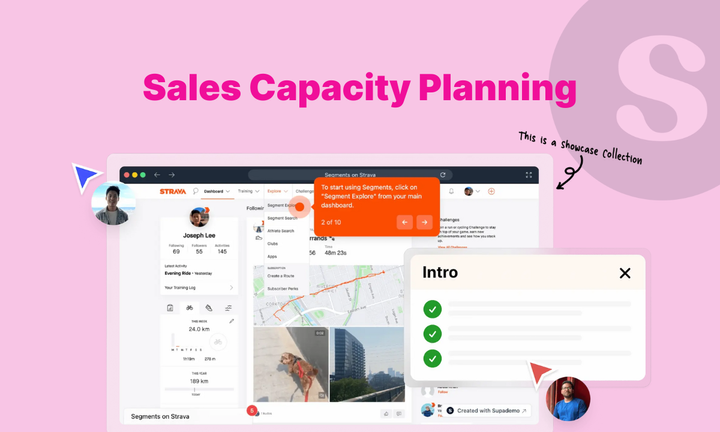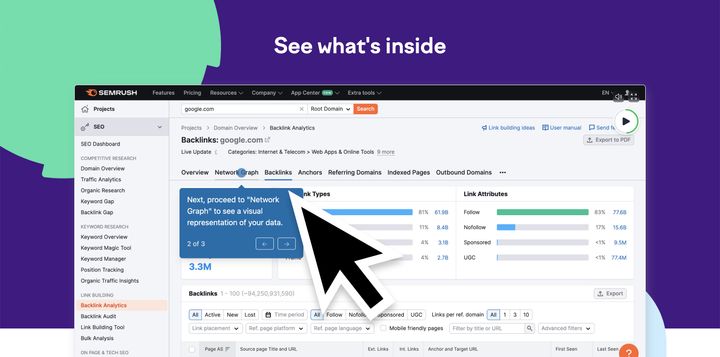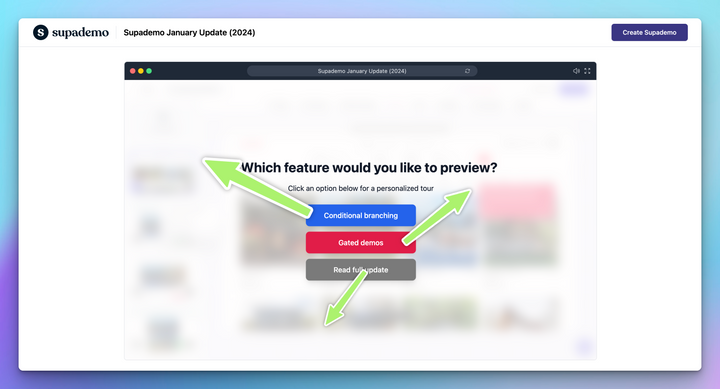Every sales leader has faced it: missed targets despite hiring more reps, or wasted budget because the team wasn’t fully utilized. The problem isn’t always effort; it’s capacity. Without knowing exactly how much your team can sell, you risk setting unrealistic quotas, misallocating resources, and burning out your reps.
That’s where sales capacity planning comes in. By calculating the real selling power of your team and aligning it with revenue goals, you can make smarter decisions, set achievable targets, and grow without guesswork.
In this guide, we’ll cover what sales capacity planning is, why it matters, how to build a capacity model, and best practices to get the most from your sales team.
TL;DR
Running multiple scenarios makes your plan more resilient, while best practices like automation, enablement, balanced territories, coaching, and standardized processes help you maximize capacity without overhiring. The result is a smarter, more efficient sales team that hits goals with confidence.
What is sales capacity planning?
Sales capacity planning is the process of estimating the number of salespeople needed and their potential sales volume to meet revenue goals. It utilizes data such as quotas, ramp time, and turnover to forecast your team’s selling power.
Unlike sales forecasting, which predicts future revenue, capacity planning looks at the resources required to achieve those targets. Done well, it helps sales leaders set achievable quotas, avoid overstaffing or understaffing, and align growth with team performance.
Why is sales capacity planning important?
Sales capacity planning helps you set targets your team can realistically achieve. Without it, you risk assigning quotas that don’t match available time or people, leading to missed goals or wasted resources.
Sales capacity planning matters because it allows you to:
- Set achievable targets: Tie quotas and forecasts to real selling capacity instead of arbitrary growth goals.
- Spot resource gaps early: Identify when you’ll need more reps, training, or enablement to stay on track.
- Balance workloads: Prevent burnout by ensuring reps have manageable pipelines and focus on the right accounts.
- Maximize efficiency: Free up sellers to spend more time on high-value activities that drive revenue.
- Improve forecasting accuracy: Give finance and leadership reliable numbers for planning and budgeting
What inputs are needed to build a sales capacity plan?
A sales capacity plan is only as good as the information behind it. Before you start, you’ll need a baseline of data that shows how your team works today and what resources are available. The key inputs include:
|
Input |
What it is |
Why it matters |
|
Headcount and roles |
Number of active reps and their focus areas (new business, renewals, accounts). |
Defines how much selling power your team currently has. |
|
Selling time |
Actual hours reps spend selling versus time on admin, meetings, or training. |
Prevents overestimating capacity by assuming full-time selling. |
|
Average deal size |
Typical revenue value of a closed deal. |
Shows how many deals are needed to meet revenue targets. |
|
Quota attainment |
Average percentage of quota achieved by reps. |
Reveals whether sales goals are realistic. |
|
Close ratio (win rate) |
Percentage of opportunities that convert into closed deals. |
Determines how much pipeline coverage is required to hit targets. |
|
Annual recurring revenue (ARR) |
Yearly revenue from subscriptions or contracts. |
Links rep output to long-term business performance. |
|
Churn and ramp time |
Rep attrition rates and time needed for new hires to become fully productive. |
Highlights how turnover and onboarding affect real selling capacity. |
|
Sales cycle length |
Average time from first contact to deal close. |
Longer cycles reduce how many deals can be closed in a given period. |
|
Market and territories |
Distribution of accounts and overall addressable market size. |
Defines natural limits on selling potential. |
|
Growth targets and seasonality |
Revenue goals, hiring plans, and demand fluctuations. |
Ensures your plan accounts for ambition and external factors. |
How to build a sales capacity planning model?
With your inputs in hand, you can now build a sales capacity model. The model translates business goals into clear headcount and productivity requirements.
Here are 6 steps to create an effective sales capacity planning model:
1. Define your revenue targets
You must start with a clear revenue goal because everything else follows from this number. Last year you made $20 million, and this year you aim for $25 million. That is 25 percent growth.
To understand whether that goal is realistic, you need to be data-driven and consider the factors driving it: new product launches, entry into fresh markets, or stronger demand in existing ones.
Once the annual goal is set, break it into quarterly milestones. Smaller checkpoints make it easier to allocate resources, monitor progress, and adjust quickly if performance slips.
2. Map your current headcount and roles
With revenue targets set, the next question is: who’s actually responsible for delivering them?
Count how many account executives, SDRs, and account managers are on your team today. Then, separate those who are fully trained from those still ramping.
For example, if you have 15 AEs but 3 are in their first quarter, you’re really working with 12 full producers.
This establishes your baseline capacity before you start adjusting for future hires or expected changes.
3. Factor in ramp time, attrition, and admin work
After mapping your team, adjust for the realities that lower effective capacity:
- Ramp time: Count new hires at partial capacity, around 50% in their first quarter, since ramp varies by experience, product complexity, sales cycle, and onboarding quality.
- Attrition: Some reps will leave during the year. Estimate likely churn based on past turnover rates.
- Admin work: Even fully ramped reps don’t spend every hour selling. Meetings, training, and admin tasks reduce their available selling time.
Accounting for these realities keeps your model honest and prevents overestimating how much revenue your team can deliver.
4. Set quota and attainment assumptions
With your team structure mapped and adjusted, the next step is to ground your model in performance. Quotas show what you expect reps to hit, but attainment reflects what they actually achieve.
For example, if each account executive has a $1M quota but on average closes only 80% of that number, then each rep is really bringing in $800K. Building your model on attainment instead of quota keeps your forecast grounded in reality.
It also gives finance and leadership more confidence in the numbers because they’re tied to what the team has historically delivered, not just what you hope they will.
5. Apply the sales capacity formula
Once you’ve mapped your team, accounted for ramp time and attrition, and set quota and attainment assumptions, you can pull everything together into a simple calculation. The simplest formula is:
But since your team includes ramping reps and attrition, a more accurate version is:
For example, if you start Q1 with 20 fully ramped reps, plan to hire 2 (counted at 50%), and expect 2 to churn, you’ll have 19 effective reps. Multiply that by $800K per rep, and your Q1 capacity is $15.2M.
6. Run multiple scenarios
Even the best capacity model is built on assumptions, and assumptions don’t always play out as expected. Reps may ramp faster or slower than planned, turnover may spike, or the market may soften. That’s why it’s important to model more than one outcome.
At a minimum, build three versions:
- A conservative case with a slower ramp, lower attainment, and higher churn.
- A base case using historical averages for performance and turnover.
- An aggressive case that assumes strong attainment, full hiring, and minimal attrition.
Looking at these side by side helps you stress-test your plan. If conditions change, you’ll already know how it impacts revenue capacity and what levers you can pull to stay on track. It also makes your plan more credible with leadership because you’re showing them a range of possibilities rather than one rigid forecast.
Best practices to improve your sales capacity
Calculating capacity shows you where you stand today. Improving it is about finding smarter ways to get more from your existing team before adding headcount. These best practices help you expand selling power without inflating costs.
Automate repetitive work
Reps lose hours each week updating CRM fields, chasing meeting slots, or drafting follow-up emails. Automating these tasks with AI or sales tech frees them to focus on conversations that move deals forward.
Even reclaiming a few hours per week per rep compounds across the team, unlocking meaningful selling time without extra headcount.
Invest in sales enablement
Sales enablement boosts capacity by giving reps tools that save time and improve consistency. Battlecards tackle objections, playbooks guide conversations, and interactive demos show value instantly.
RB2B faced an overwhelming number of demo requests and relied on static sales materials that didn’t scale. With Supademo, they automated product tours across sales and marketing, giving prospects a polished, on-demand evaluation experience.
The impact was immediate: 60+ hours saved in the first 30 days, consistent high-quality demos delivered at scale, and more time for the team to focus on growth.
“Supademo has allowed us to deliver the same high quality demos and product tours as we would have in person all while allowing users to learn and explore at their own pace.” ~ Robb Clarke, Head of AI, RB2B
Balance territories and accounts
Territory design directly affects sales capacity because uneven workloads waste potential. A rep overloaded with accounts cannot give each one enough attention, while another with too few ends up underutilized. The solution is to rebalance accounts so each rep has the right mix for their segment.
Enterprise sellers perform best with fewer, high-value accounts that demand depth, while SMB reps thrive on higher volumes where speed matters. When territories are balanced this way, opportunities are covered more effectively, capacity is used to its fullest, and productivity rises across the team without expanding headcount.
Coach reps with hands-on learning
To improve sales capacity, make sure new hires ramp quickly and existing reps keep sharpening their skills. Strong sales onboarding is the foundation, because to sell better, they need to know your product better.
Asynchronous learning paths, like interactive demos, let reps train at their own pace instead of relying only on shadowing or slide decks.
With Supademo, you can deliver personalized, hands-on learning for each team member. New hires can practice workflows until confident, while seasoned reps use the same demos to stay current on features and refine their approach. The result is a faster ramp, continuous improvement, and more deals closed.
Standardize sales processes
When every rep manages deals their own way, you lose efficiency and predictability. Defining clear pipeline stages, handoff points, and best practices creates consistency across the team.
Process standardization reduces confusion, speeds up deal cycles, and gives new hires a proven playbook so they can contribute faster with fewer mistakes.
Double your sales capacity with Supademo
If you’re looking to improve sales capacity, remember it doesn’t come from hiring more reps. It comes from smarter systems that help your team sell faster, ramp quicker, and close with confidence.
And that's what Supademo makes possible:
- Prospects engage through self-paced interactive demo videos instead of static decks, driving a 36% increase in MQL-to-SQL conversion.
- Deal cycles accelerate, with customers showing 33% faster velocity once they’ve already experienced value on their own.
- And with hyper-personalized demo assets that include intent tracking, companies see a 28% reduction in CAC.
VRIFY, a platform transforming mineral exploration with AI-driven insights and advanced visualization, uses Supademo to power its sales motion.
Here’s how they increased sales capacity:
- 75% reduction in enablement content production time
- 100+ interactive demos created for training and sales
- $100K+ saved in headcount and time
"Supademo is a fantastic product that has allowed us to rapidly increase our onboarding and knowledge creation at VRIFY, which is key to our rapidly expanding product. Alongside their product being both technically advanced and easy to use, their team makes the experience even better." ~Nova Siegmann, VRIFY
Ready to double your team’s output without doubling headcount?
FAQs
How to calculate your sales capacity?
Sales capacity is calculated by multiplying the number of effective reps (adjusted for ramp, attrition, and admin time) by their average attainment. For example: Effective reps × Average quota attainment = Capacity. Running scenarios for conservative, base, and aggressive cases keeps your estimate realistic.
What are the five steps of capacity planning?
The five steps are: Set revenue goals, map headcount, adjust for ramp/attrition/admin work, set quota and attainment assumptions, and run scenarios.
What’s the difference between sales forecasting and capacity planning?
Forecasting predicts revenue from pipeline. Capacity planning calculates how much revenue your team can actually deliver with current resources.
How often should sales capacity planning be done?
Most companies review capacity annually during strategic planning, but high-growth SaaS teams benefit from quarterly updates. This cadence helps adjust for turnover, new hires, and shifting market conditions, ensuring targets stay achievable and resources are allocated effectively.
What are the common mistakes in sales capacity planning?
Common pitfalls include ignoring ramp time, using quotas instead of actual attainment, overlooking attrition, and failing to run multiple scenarios. These mistakes inflate expectations, create misalignment with finance, and set reps up for burnout. A disciplined, data-driven model avoids these issues.




